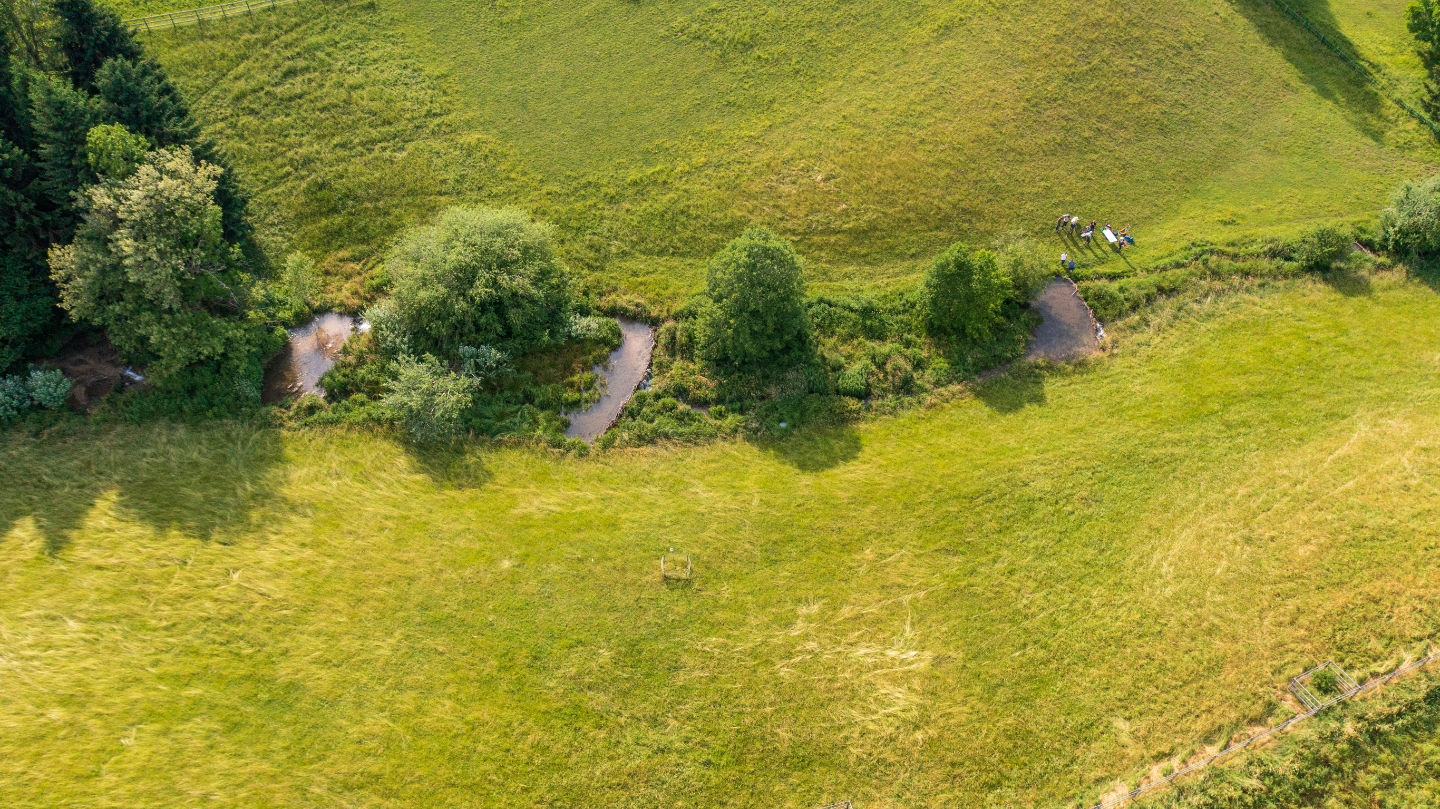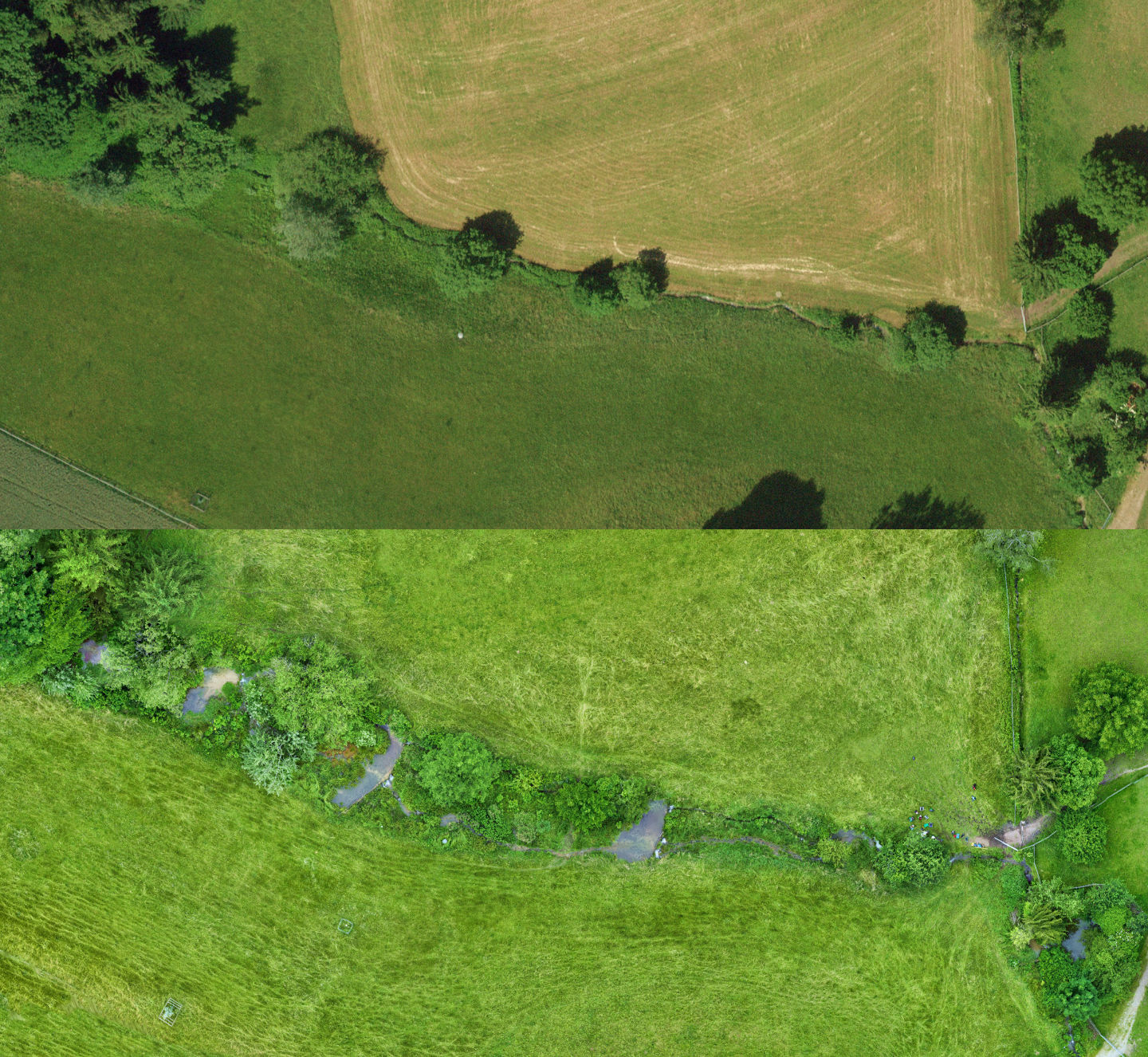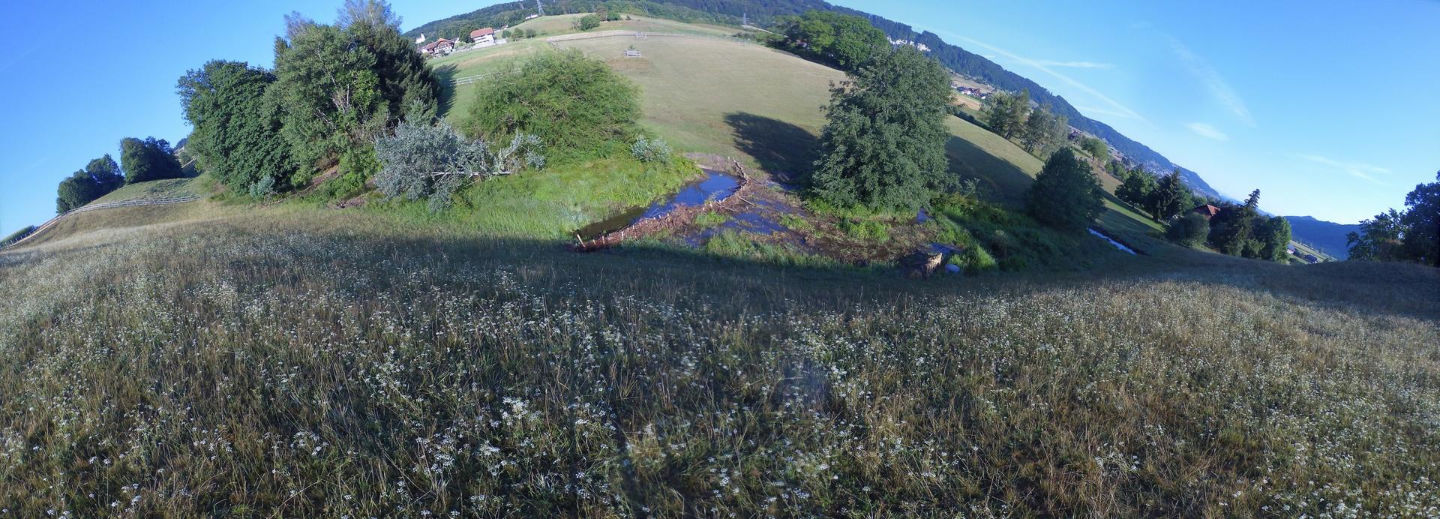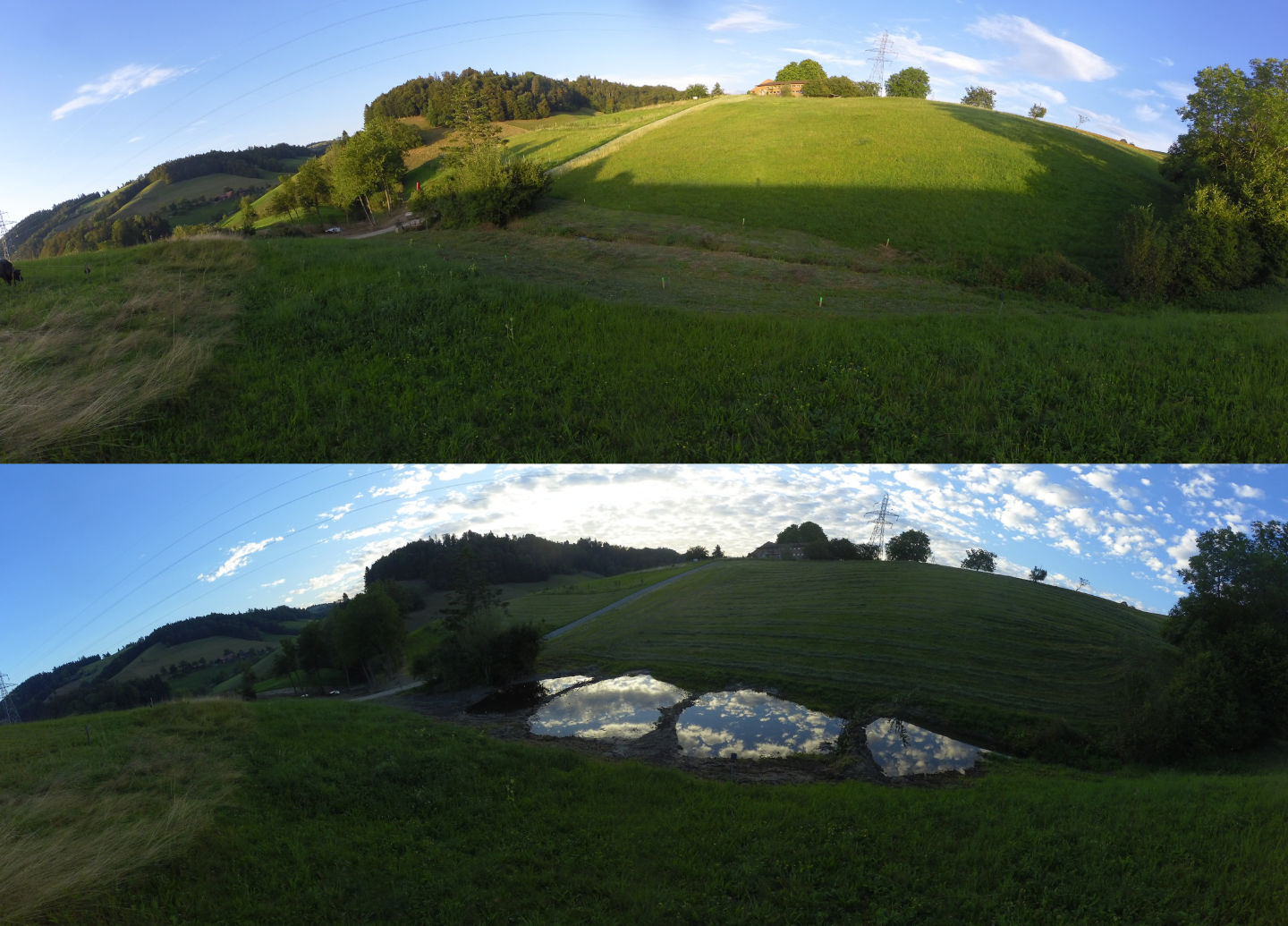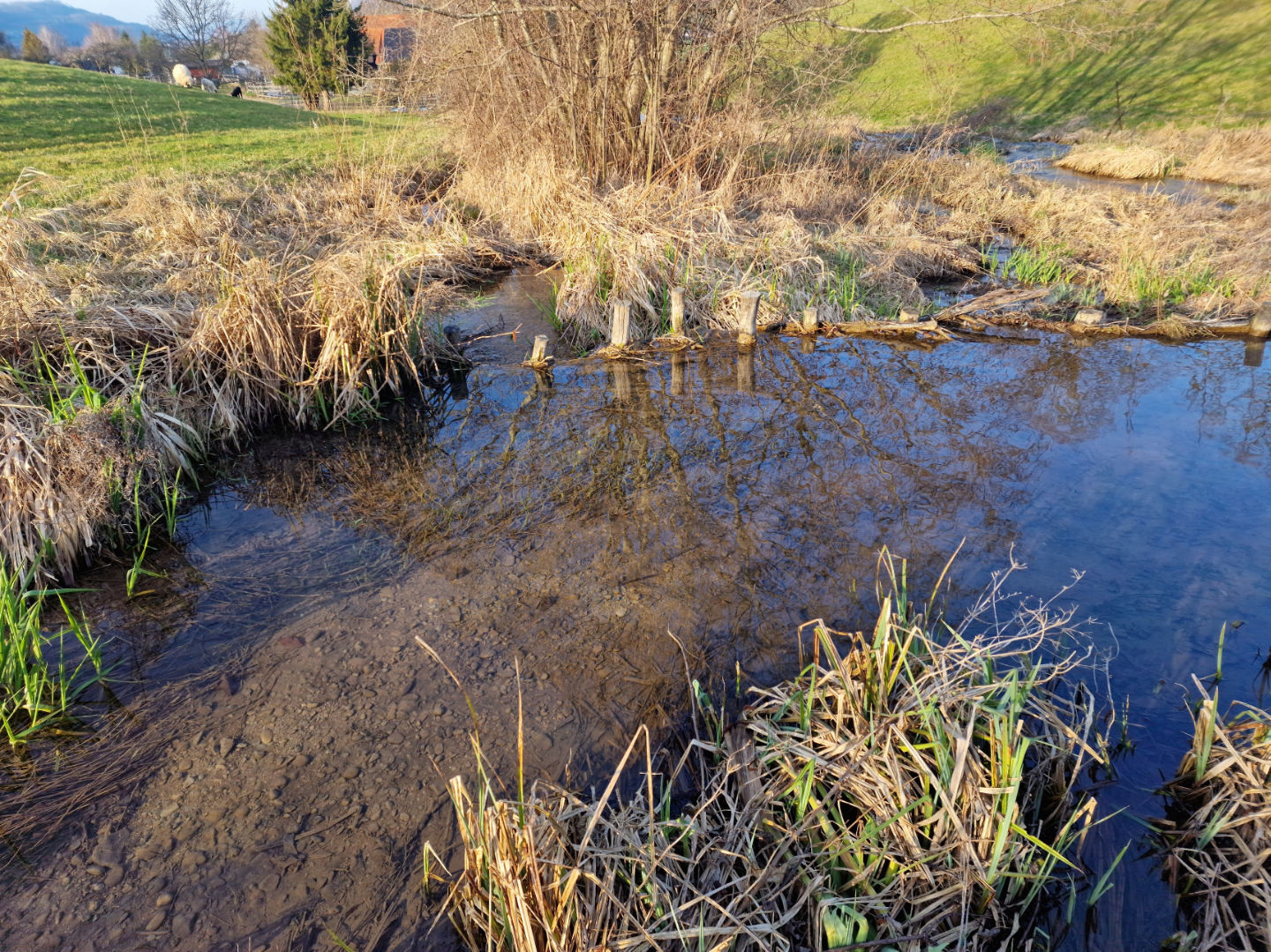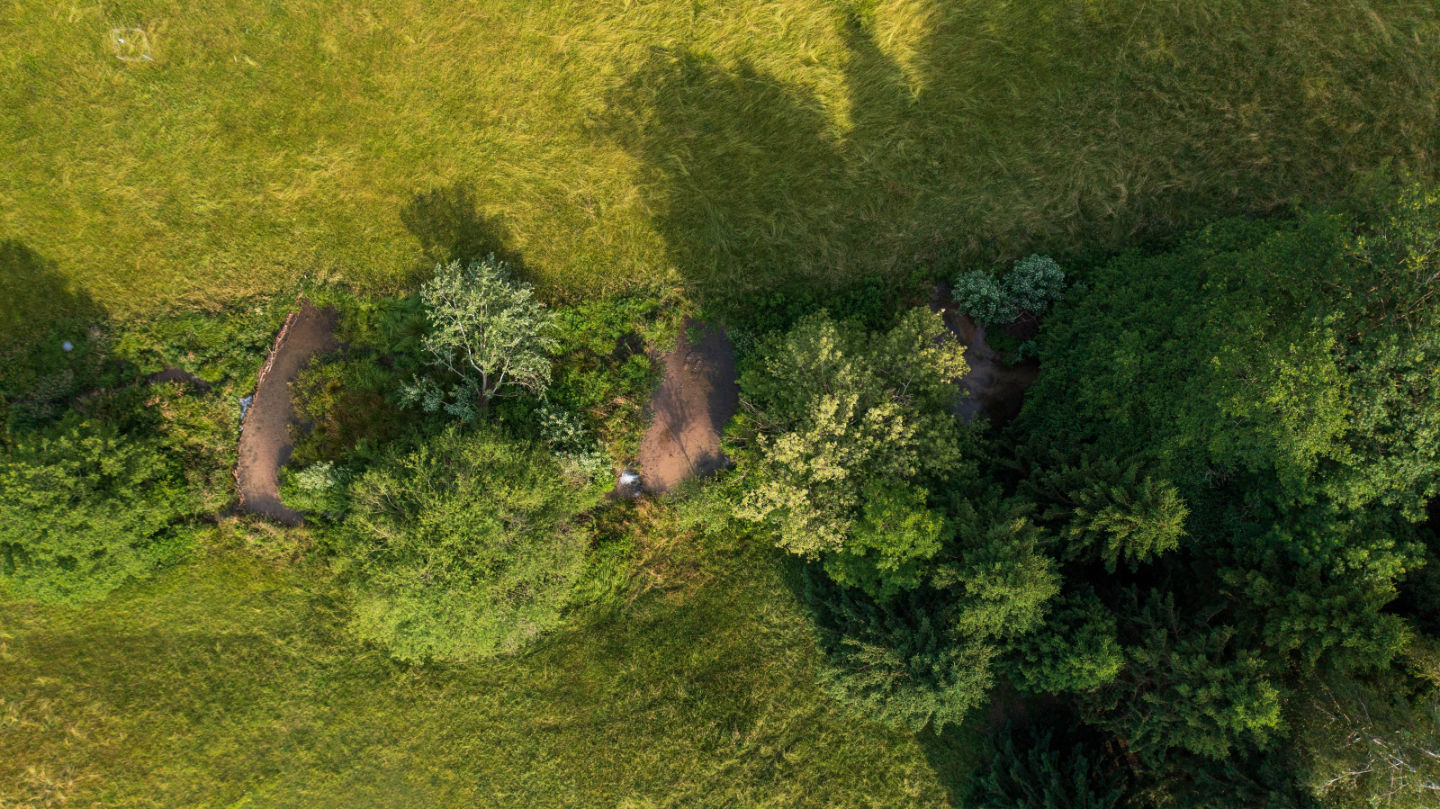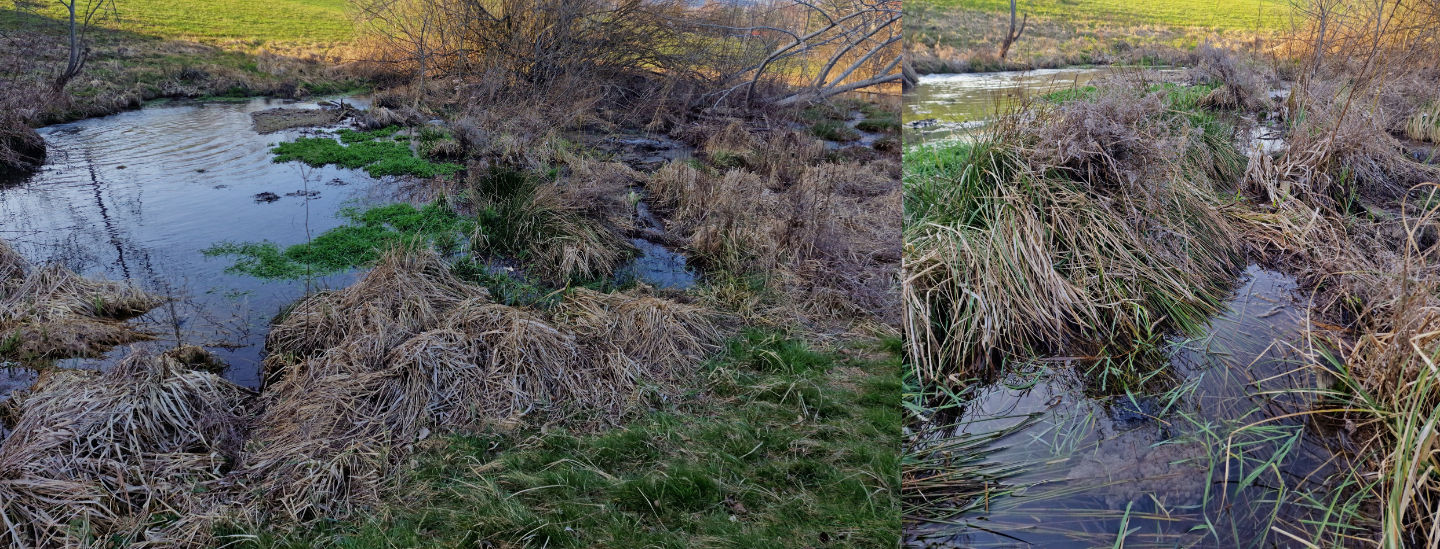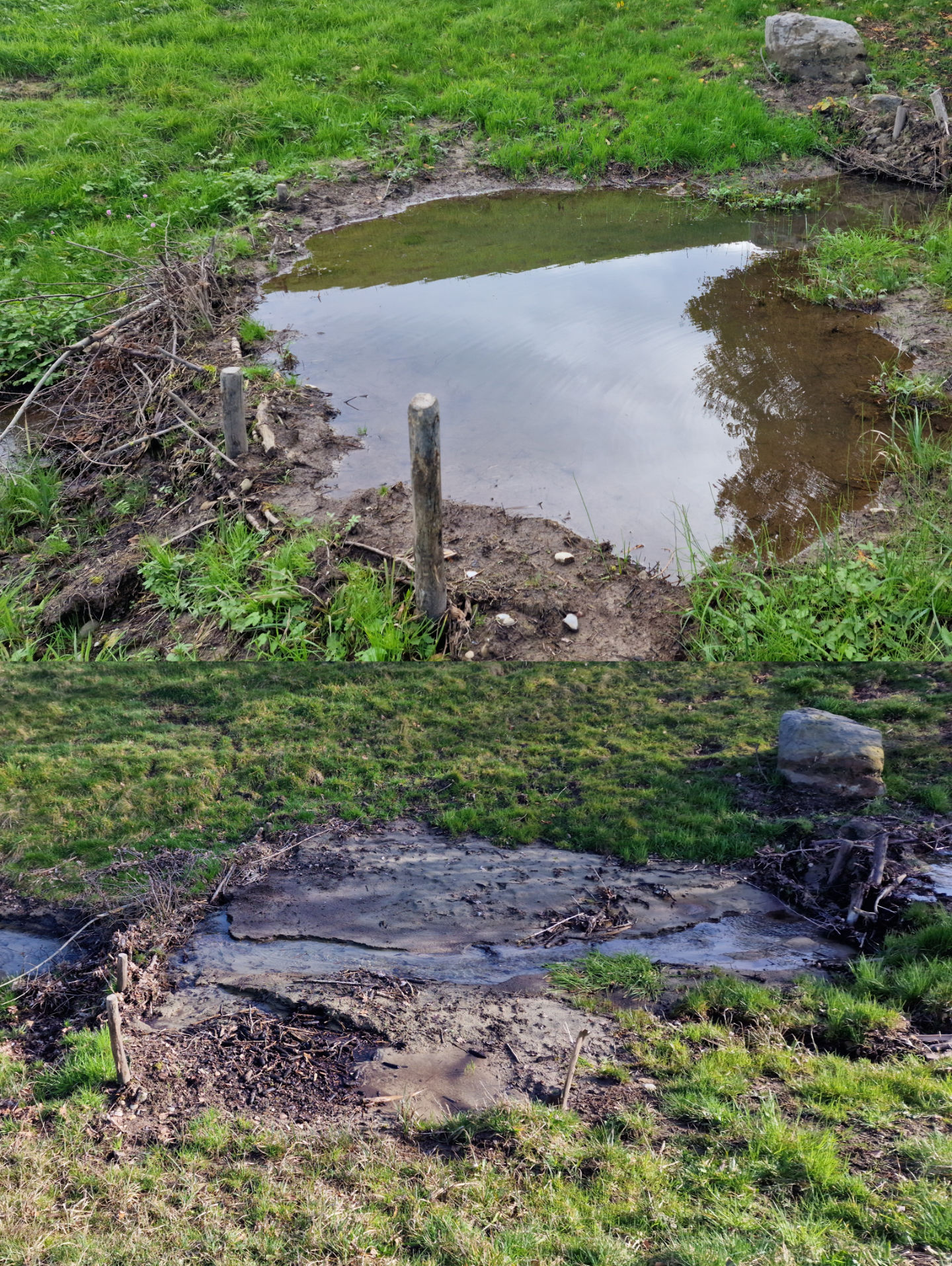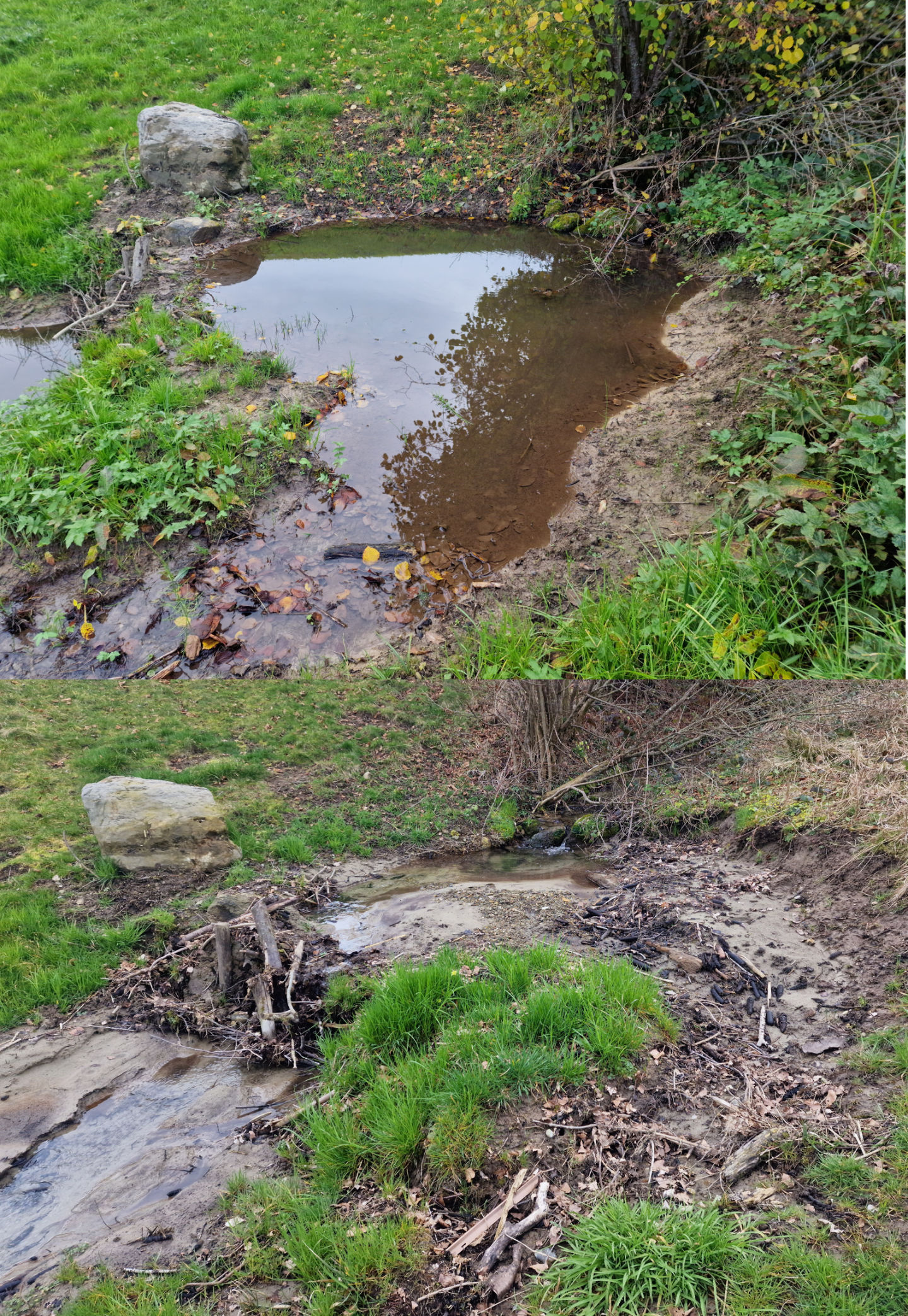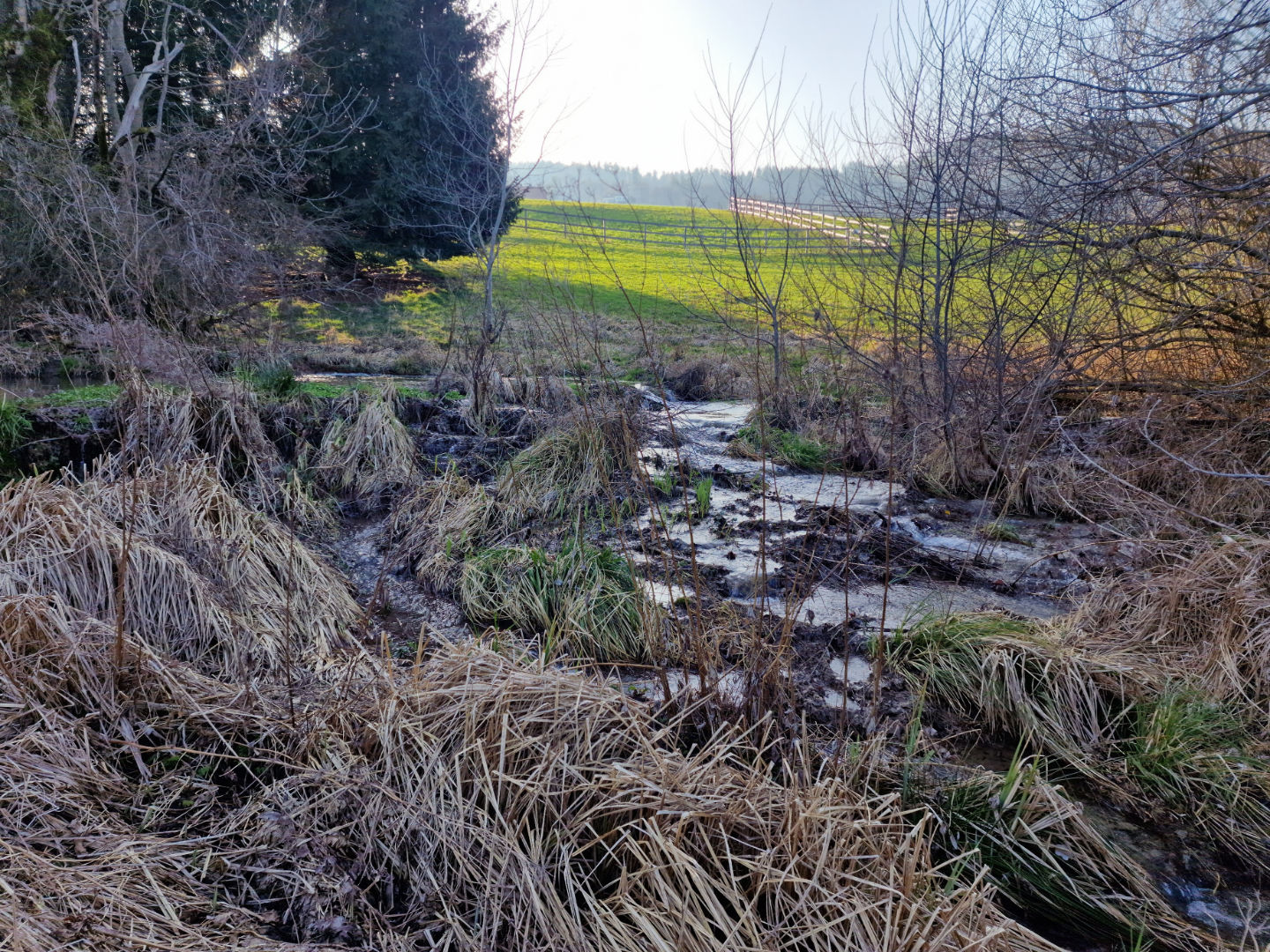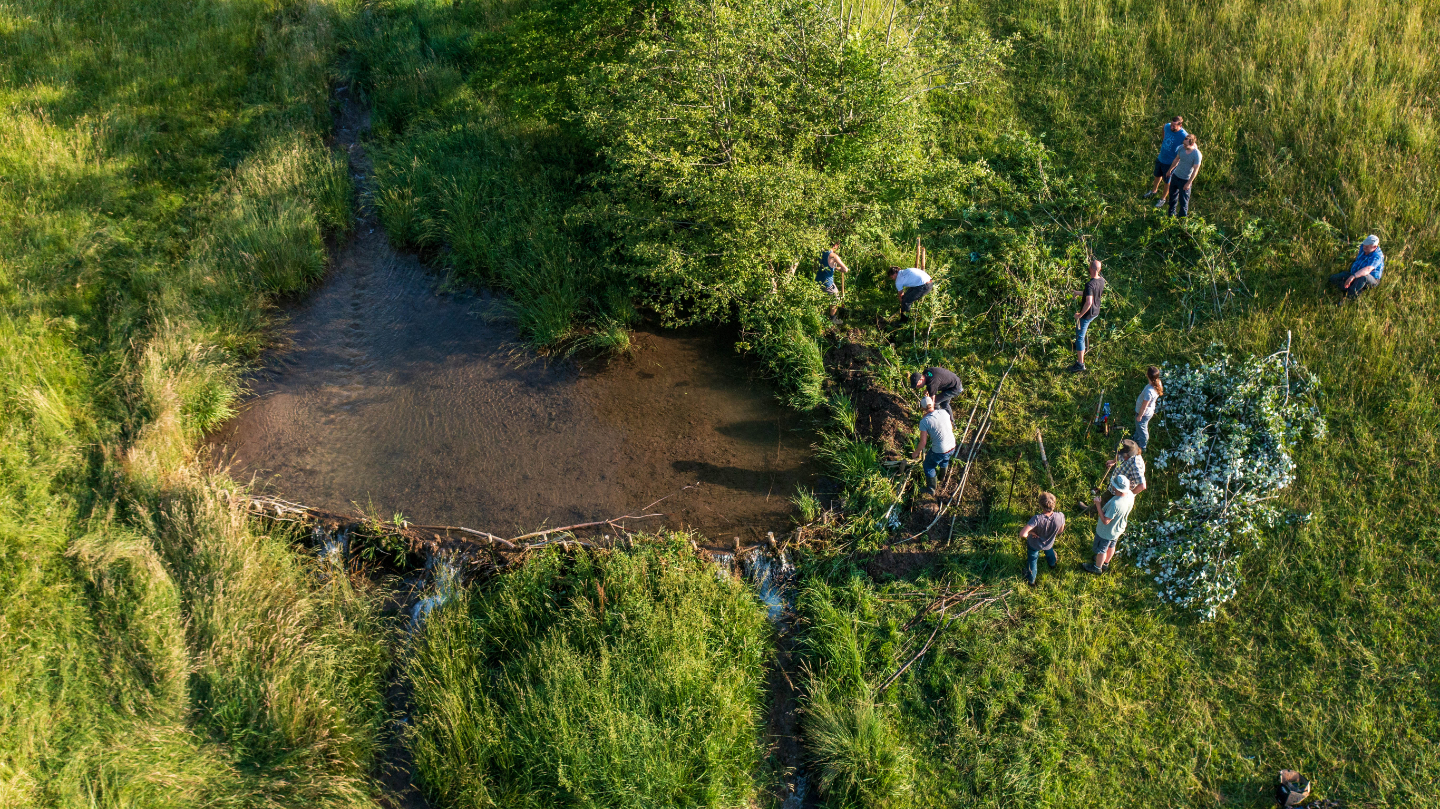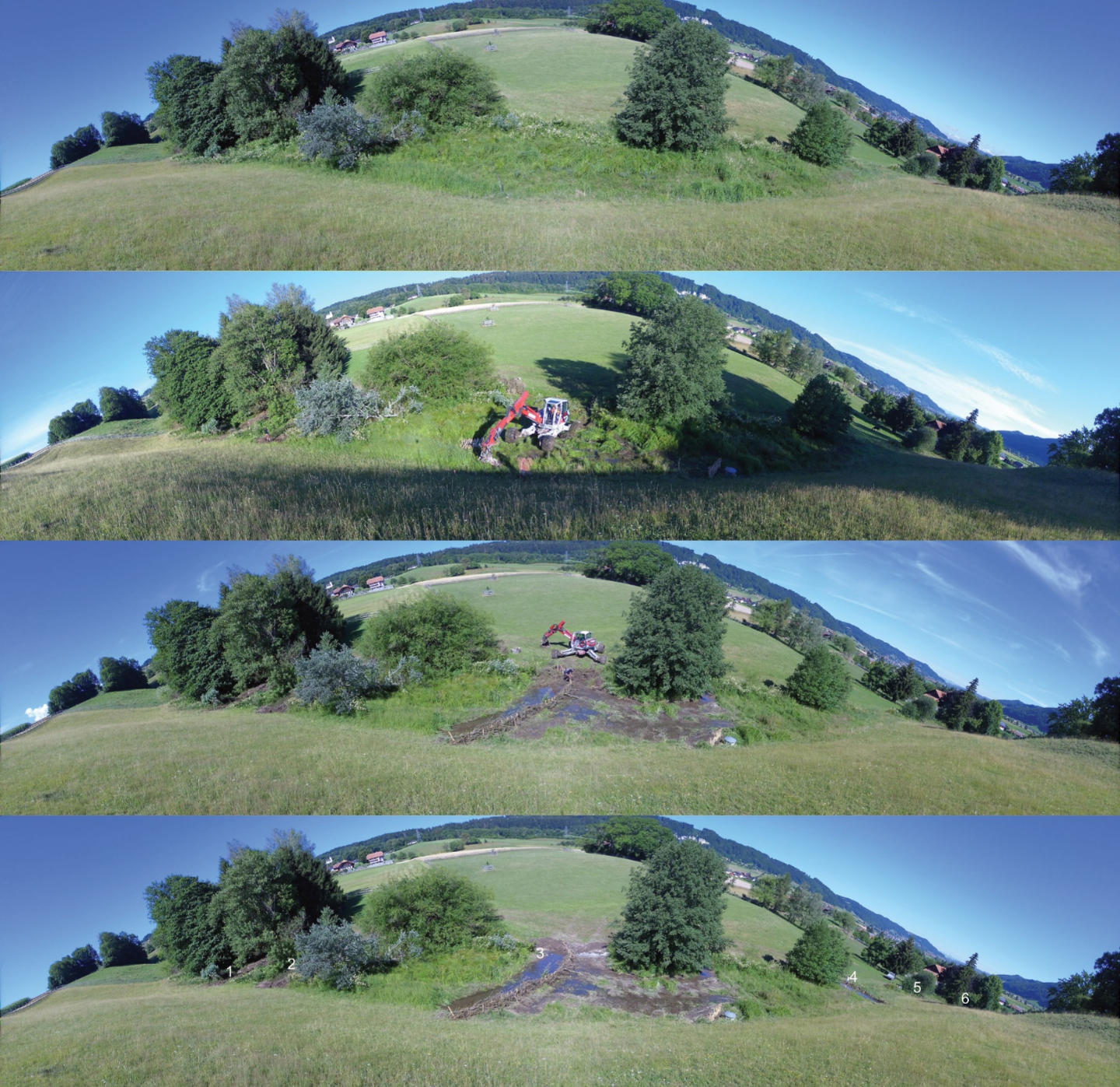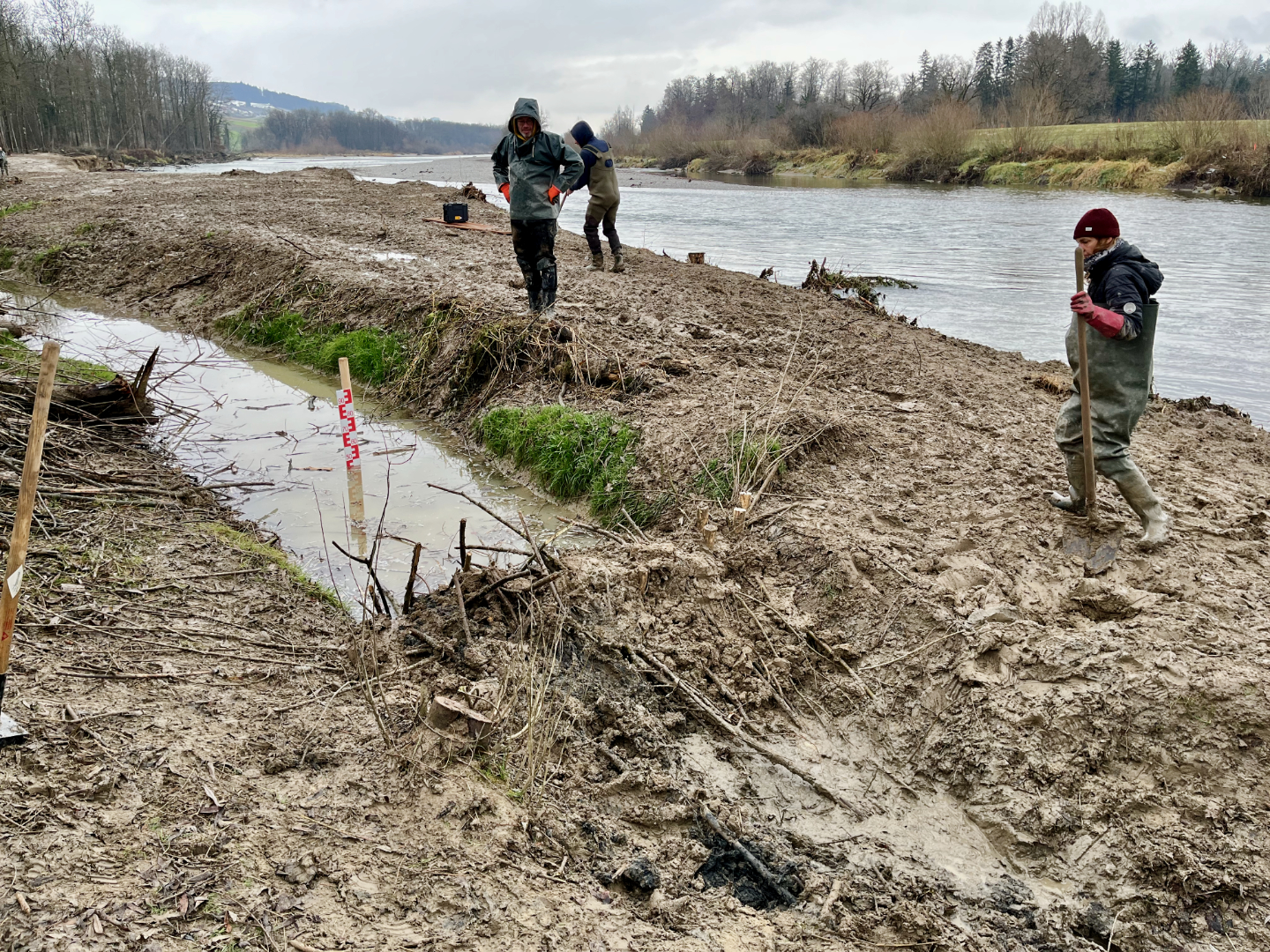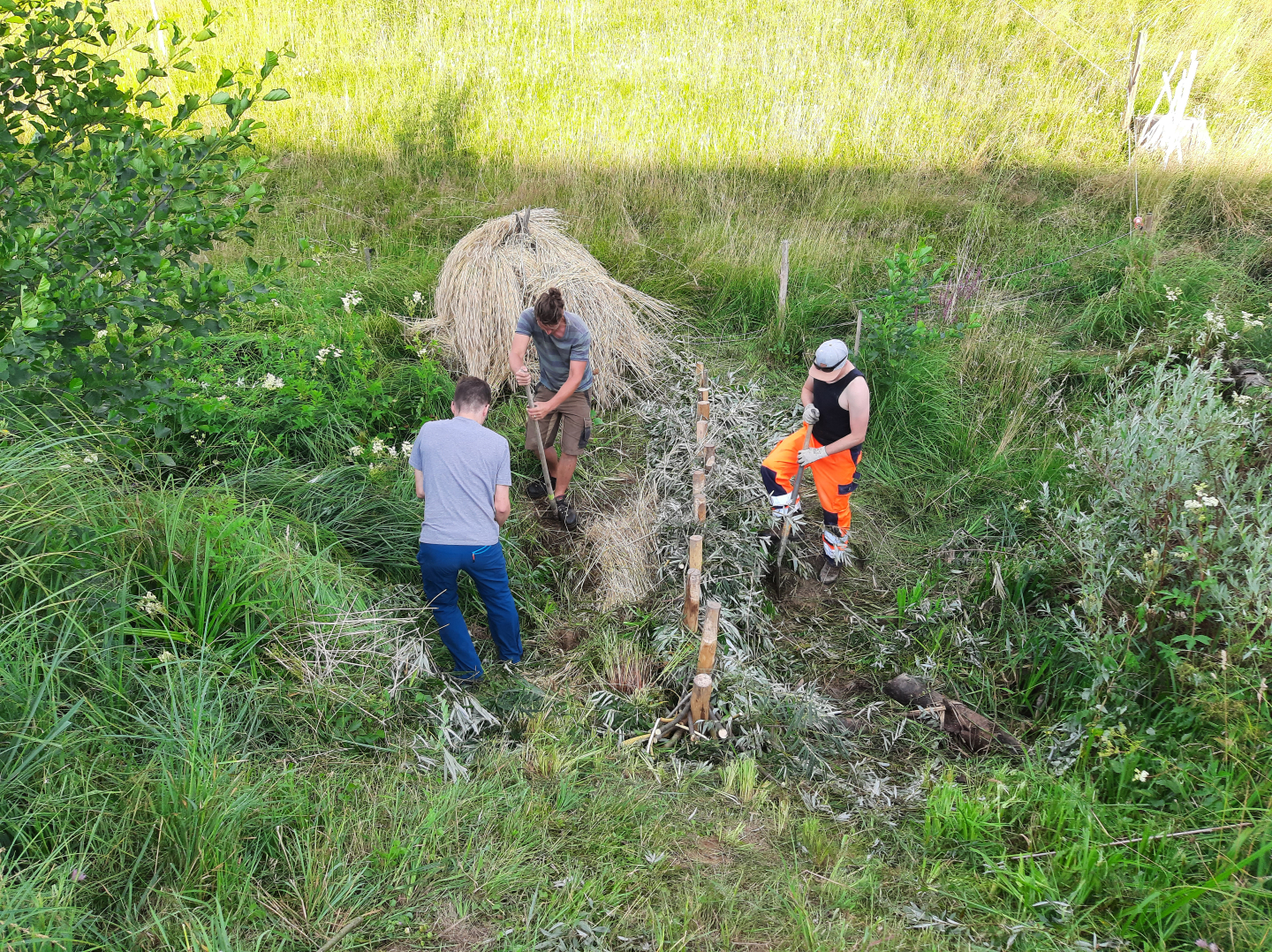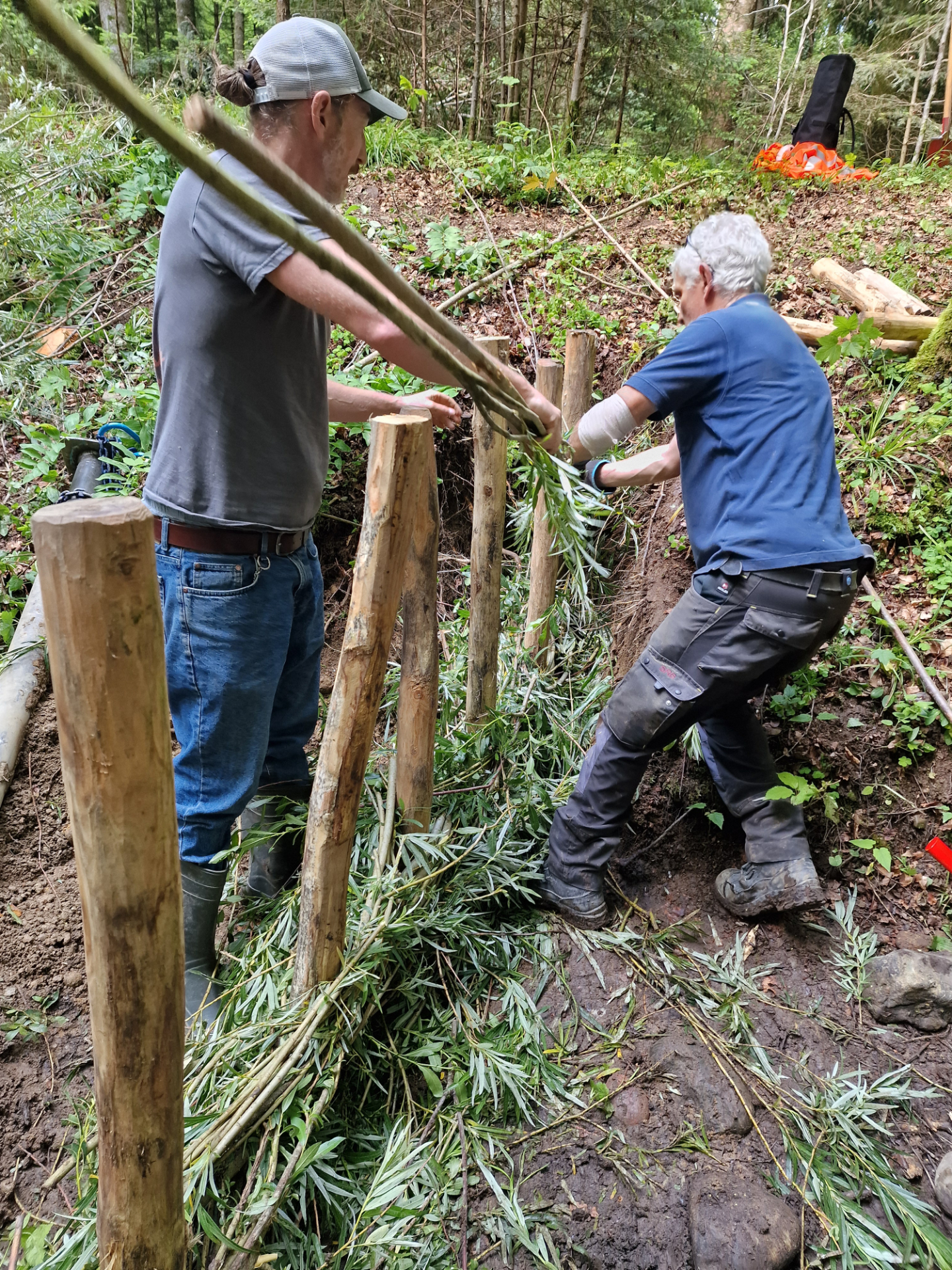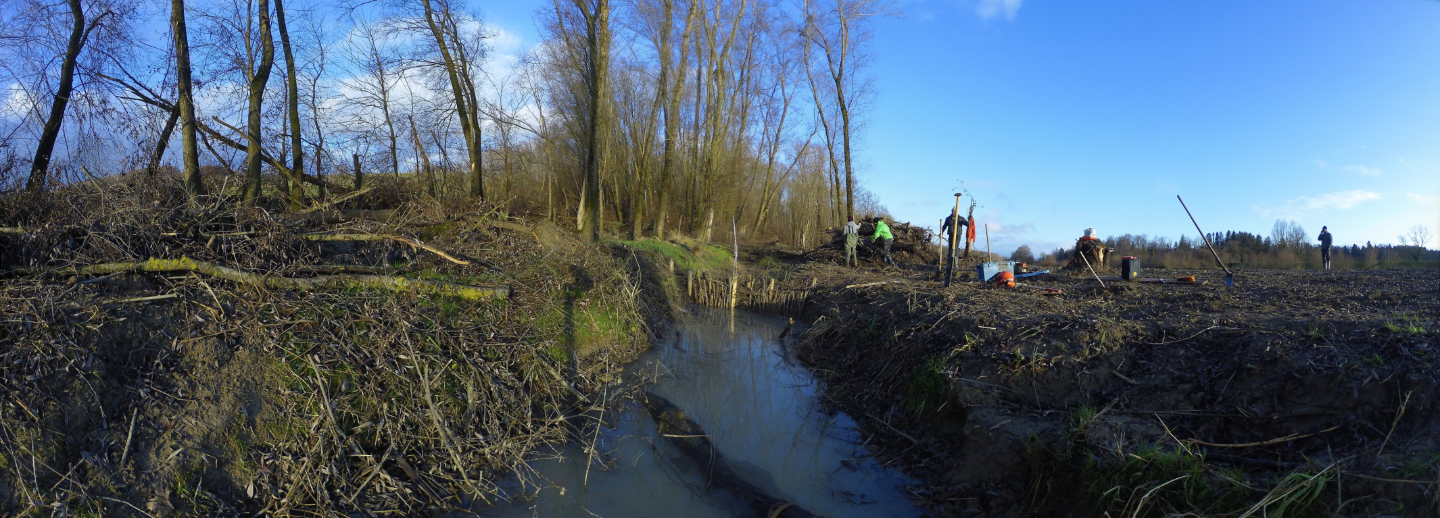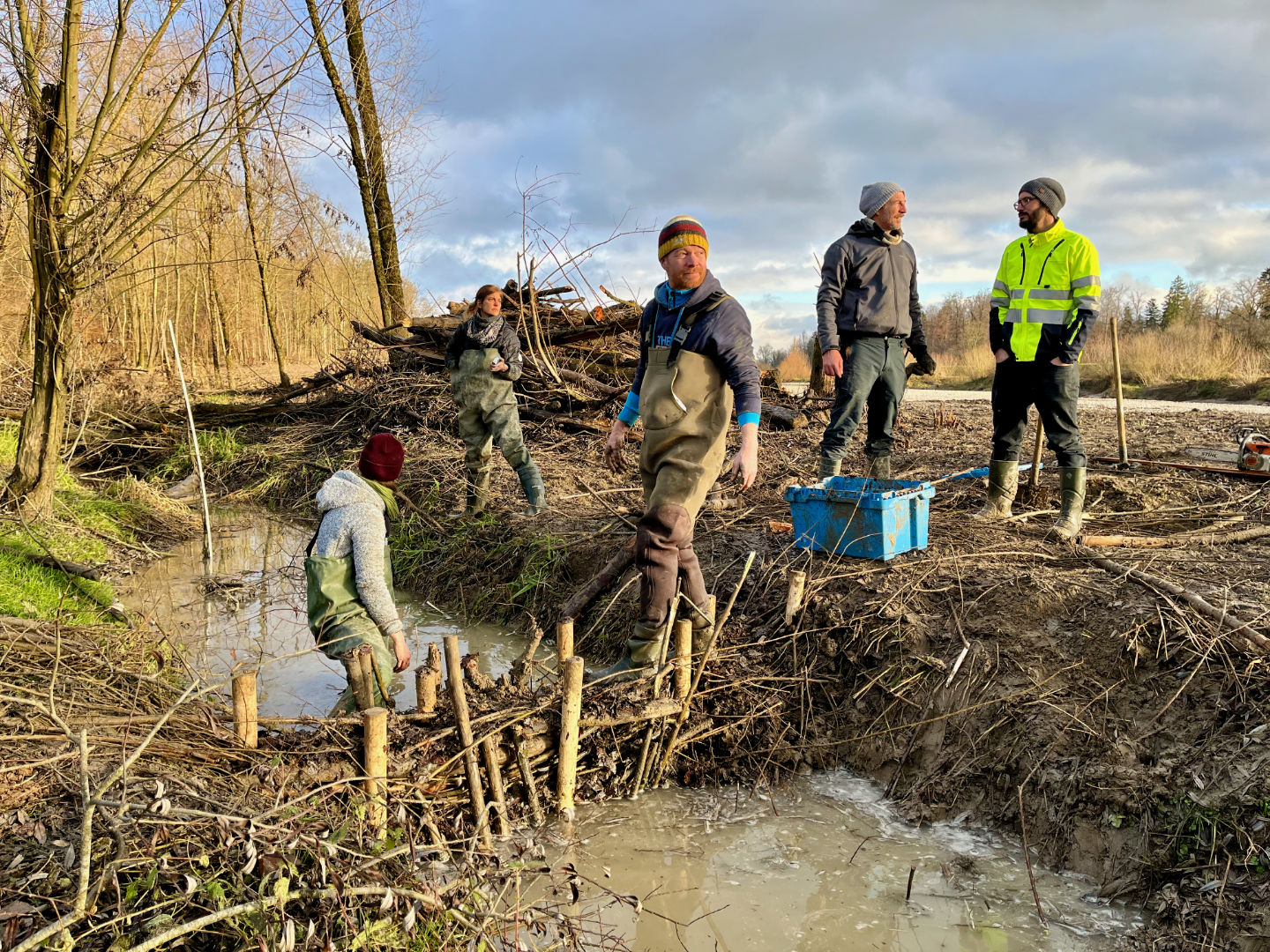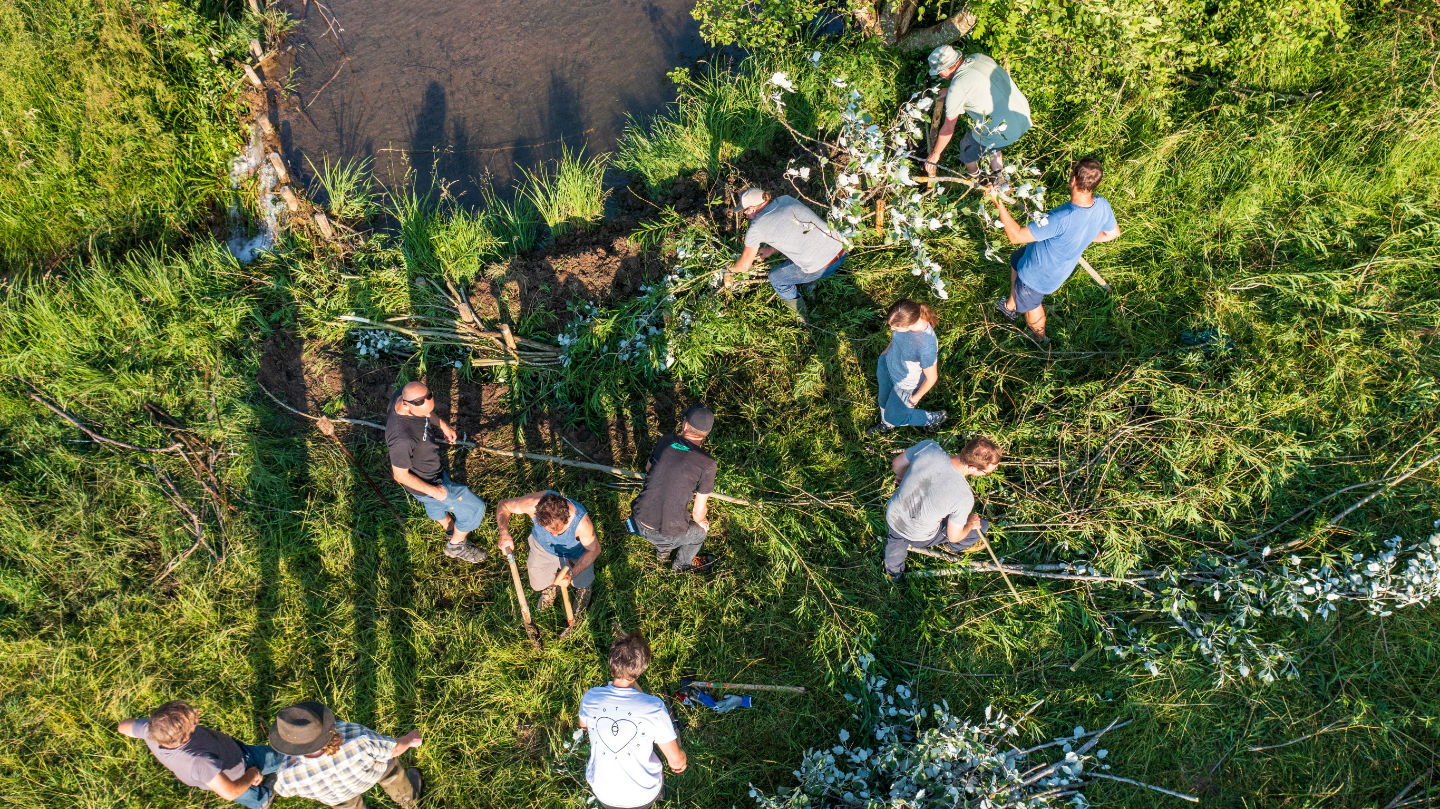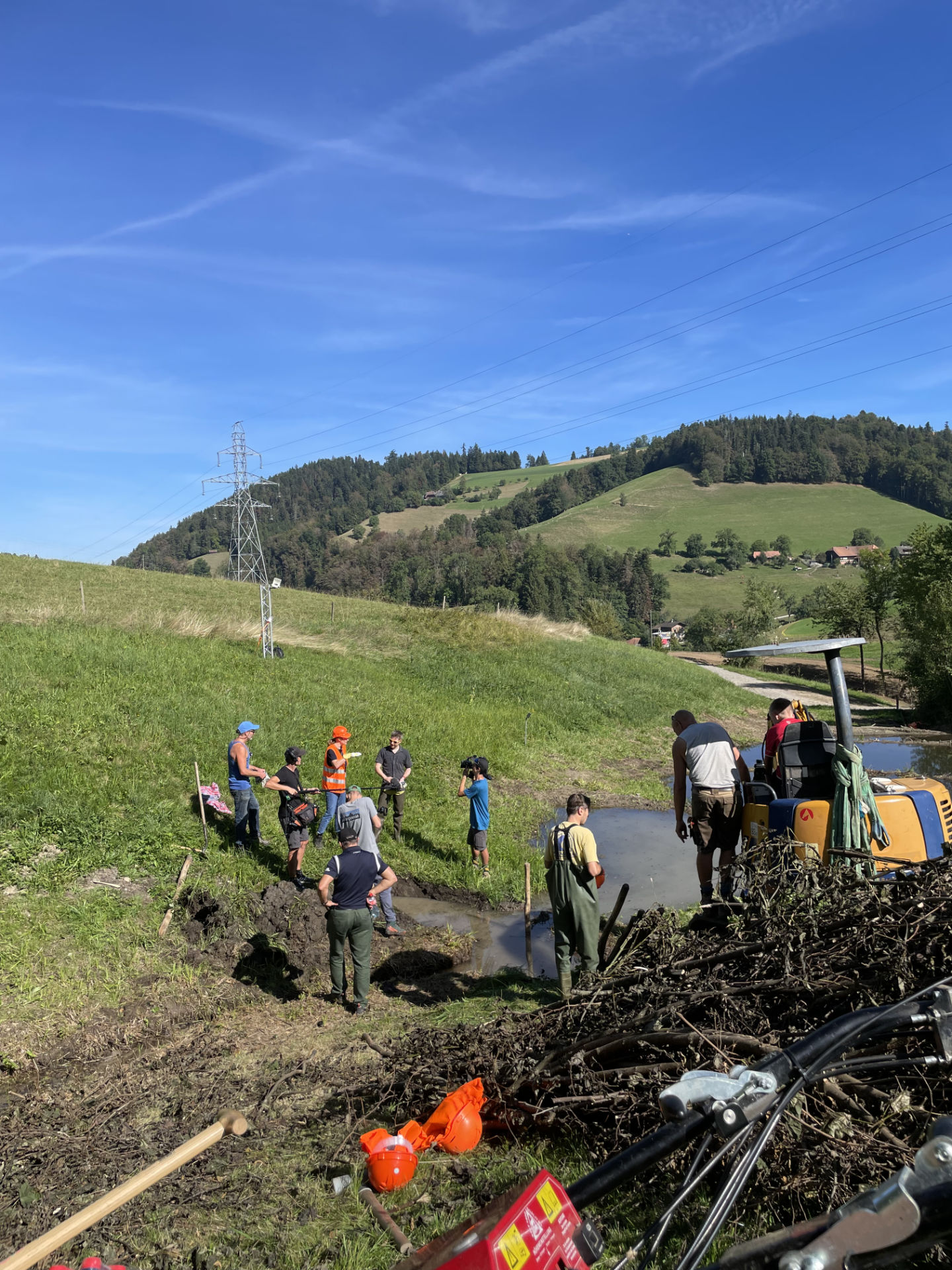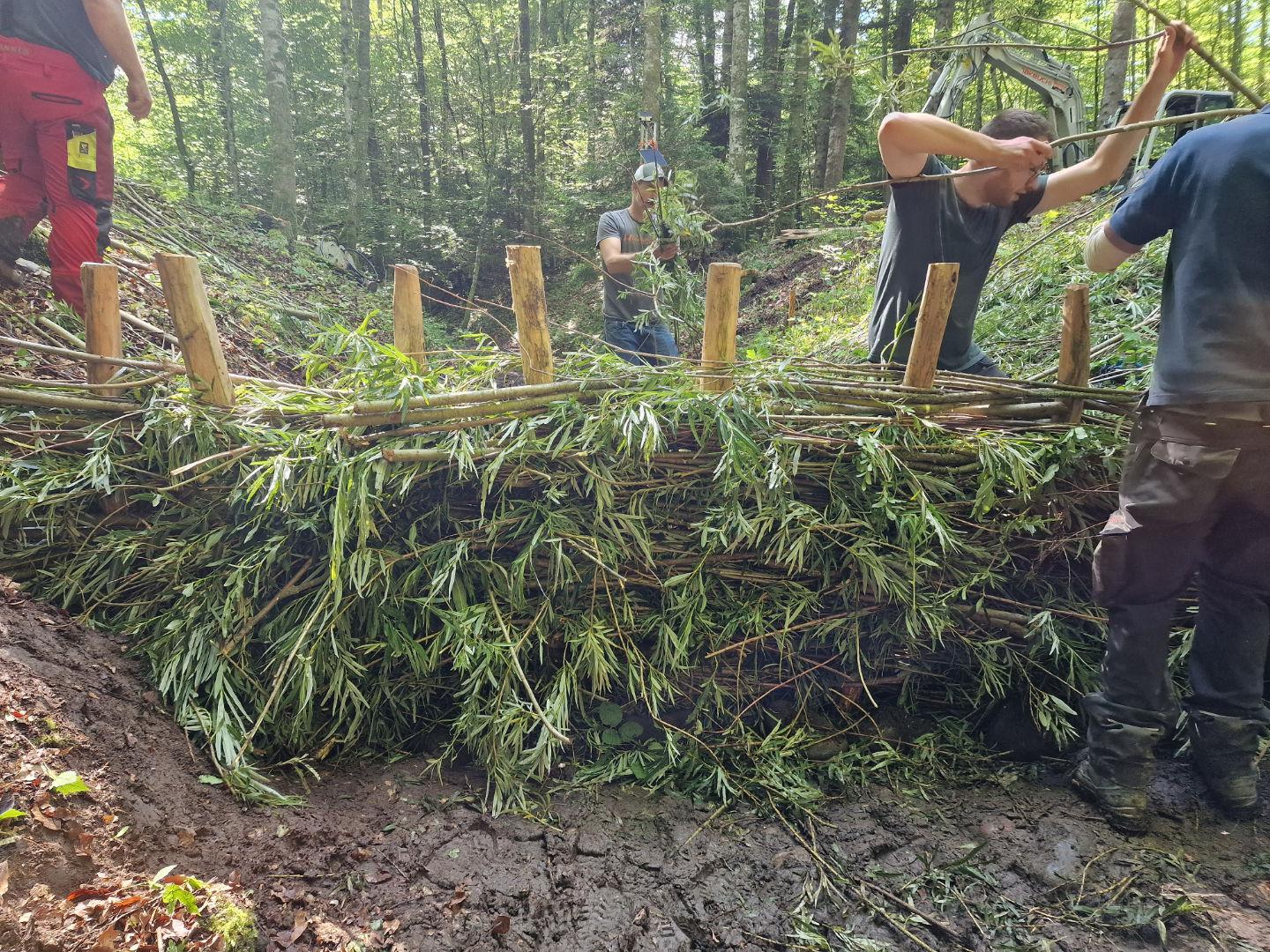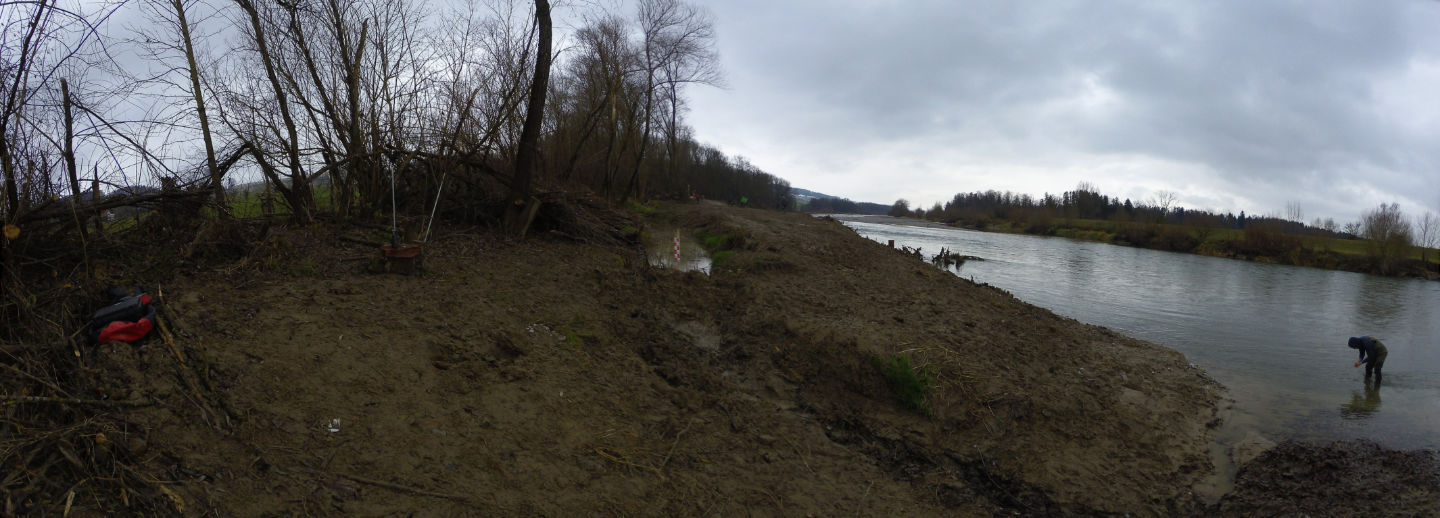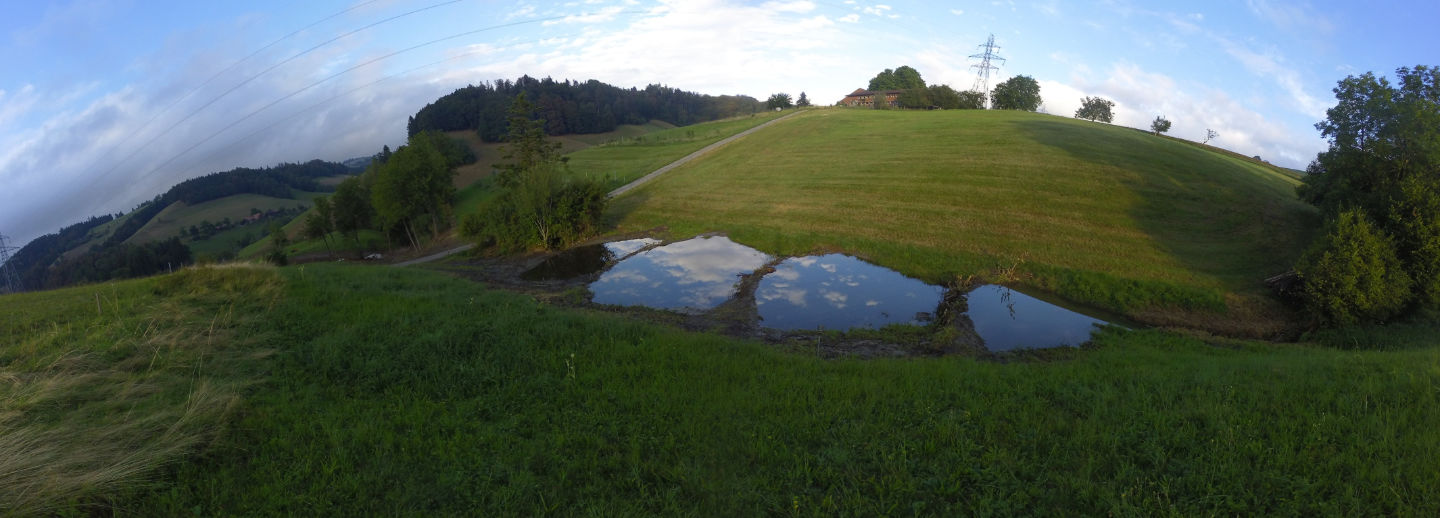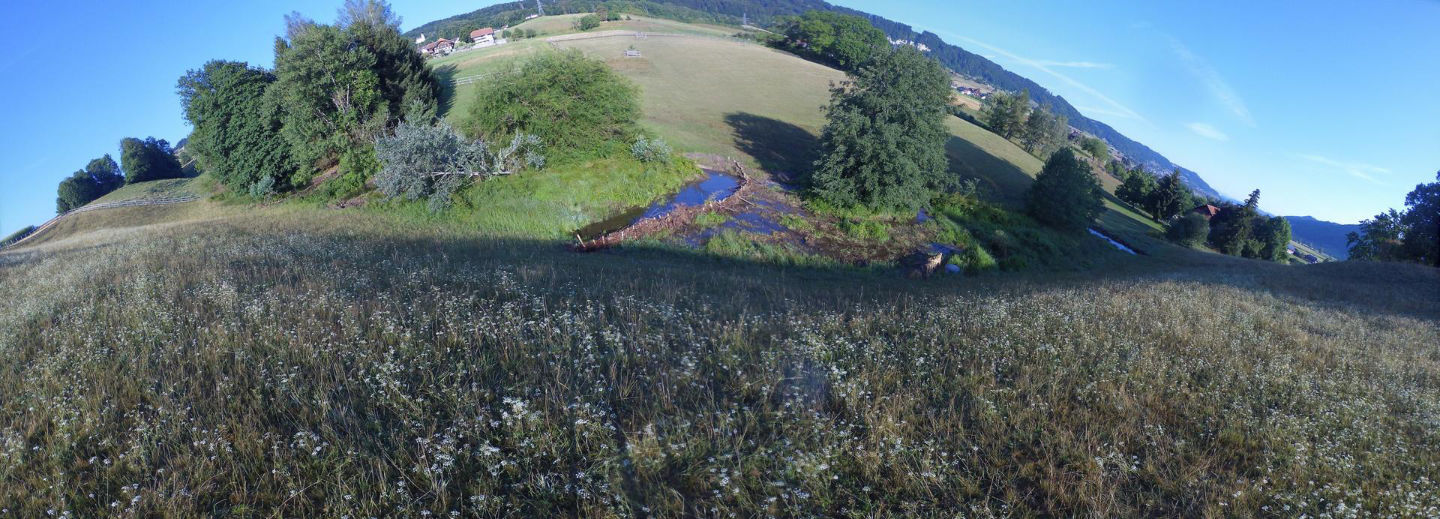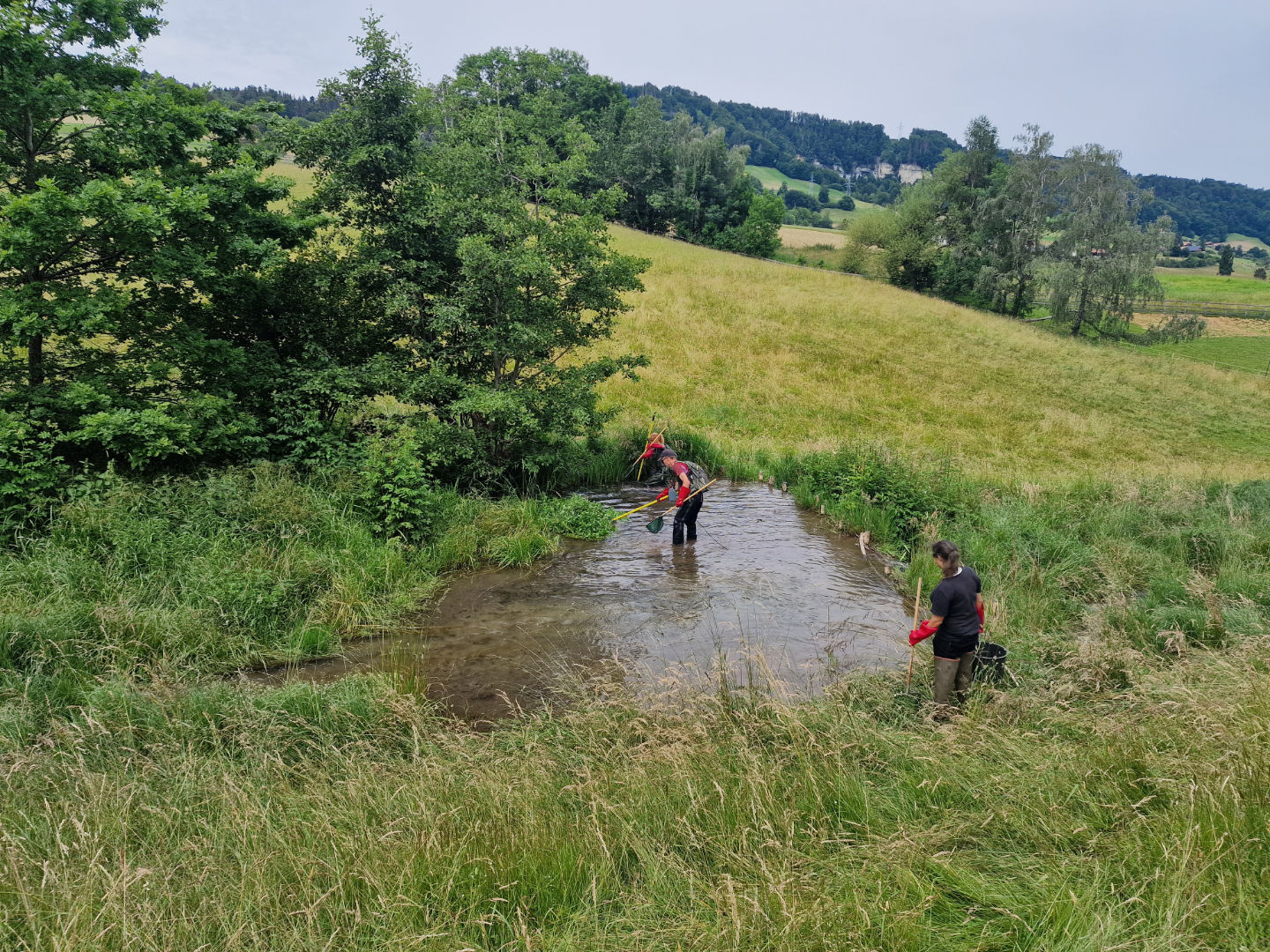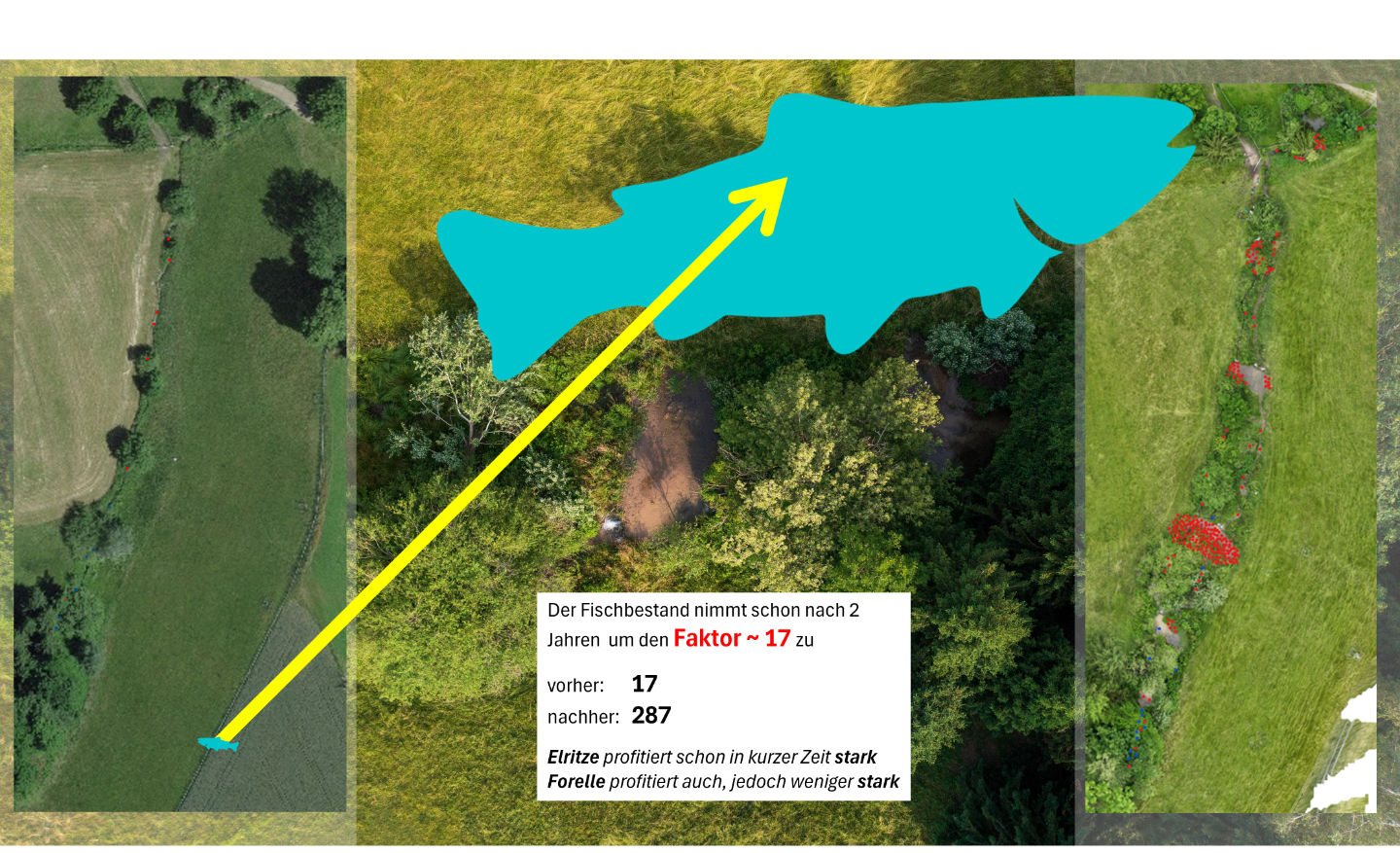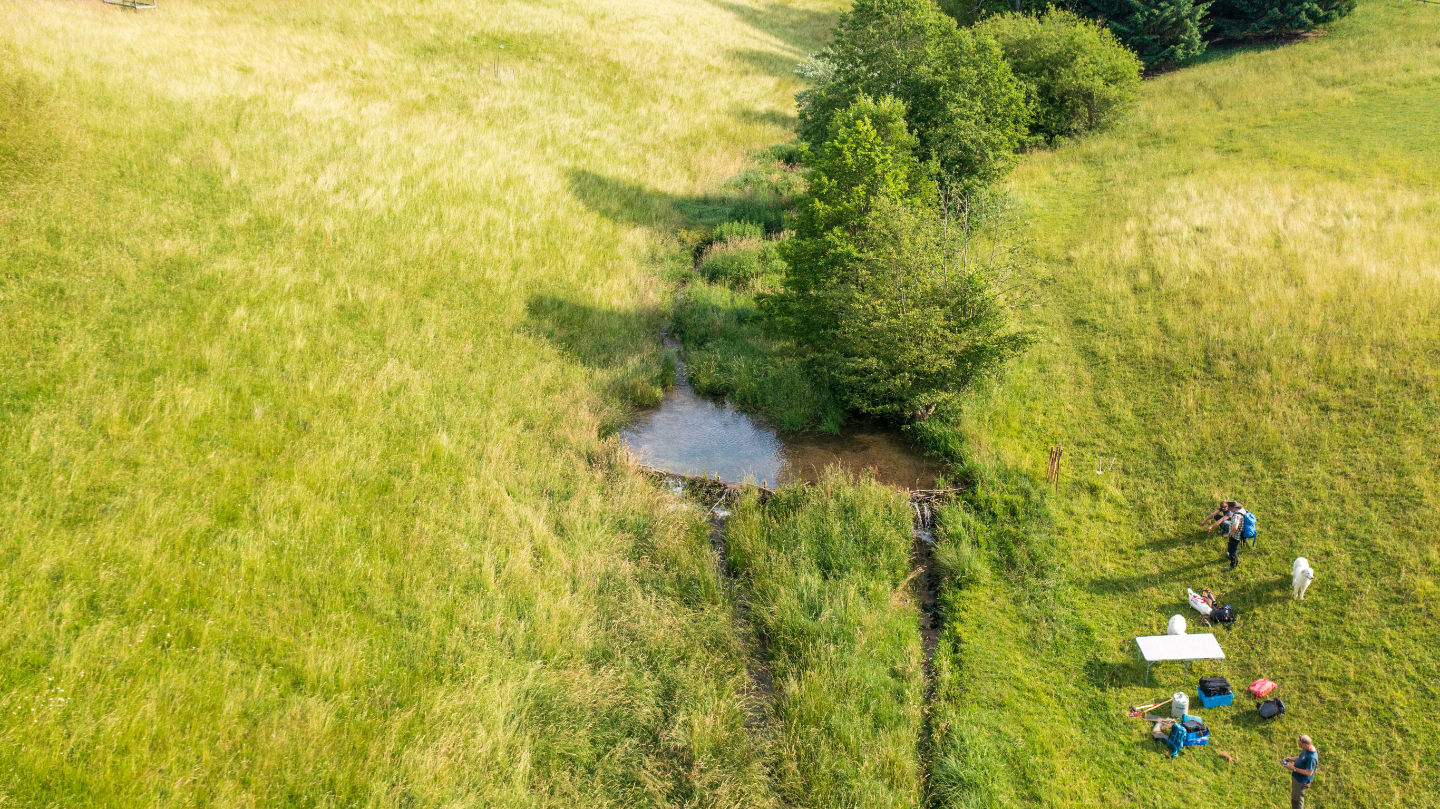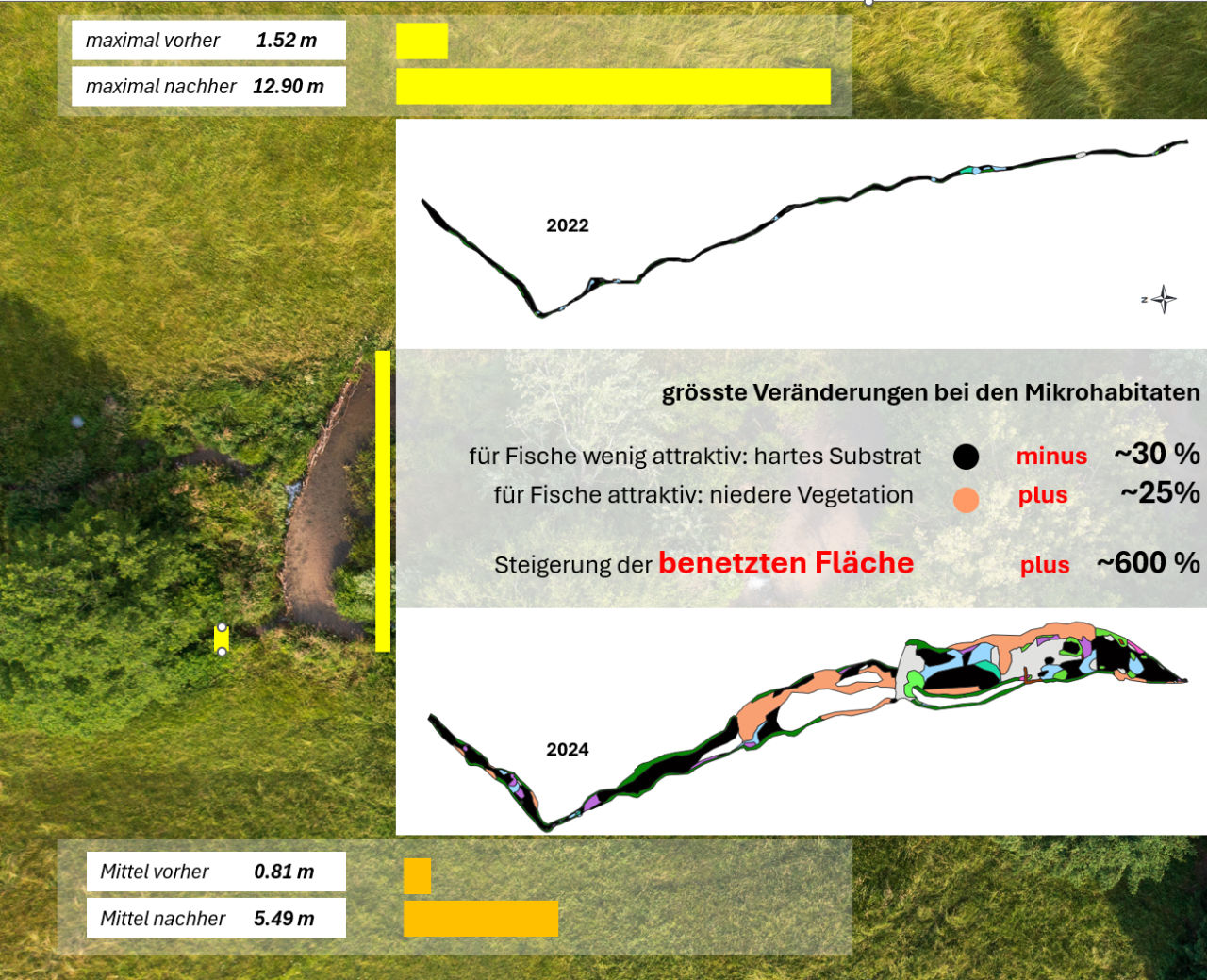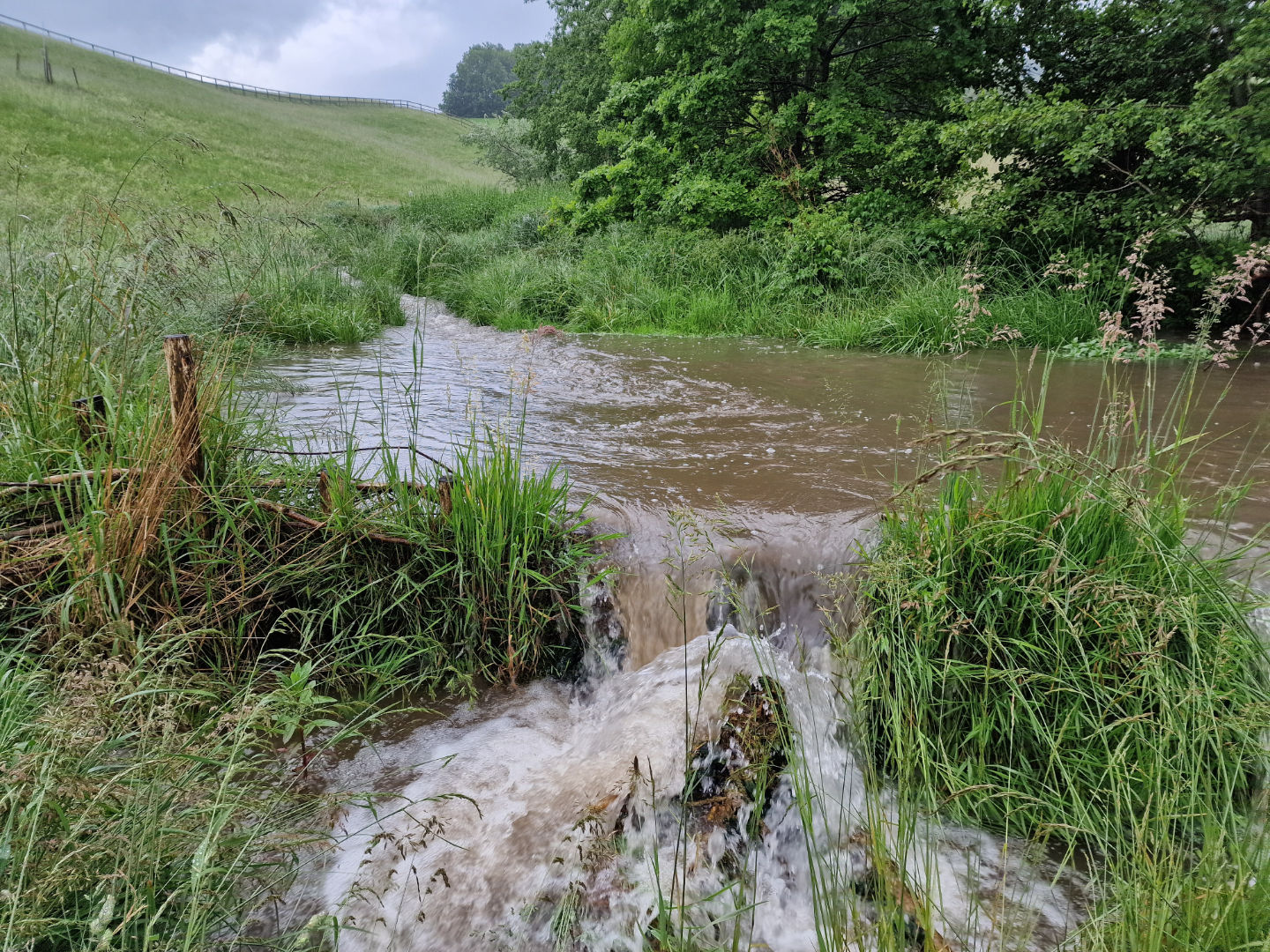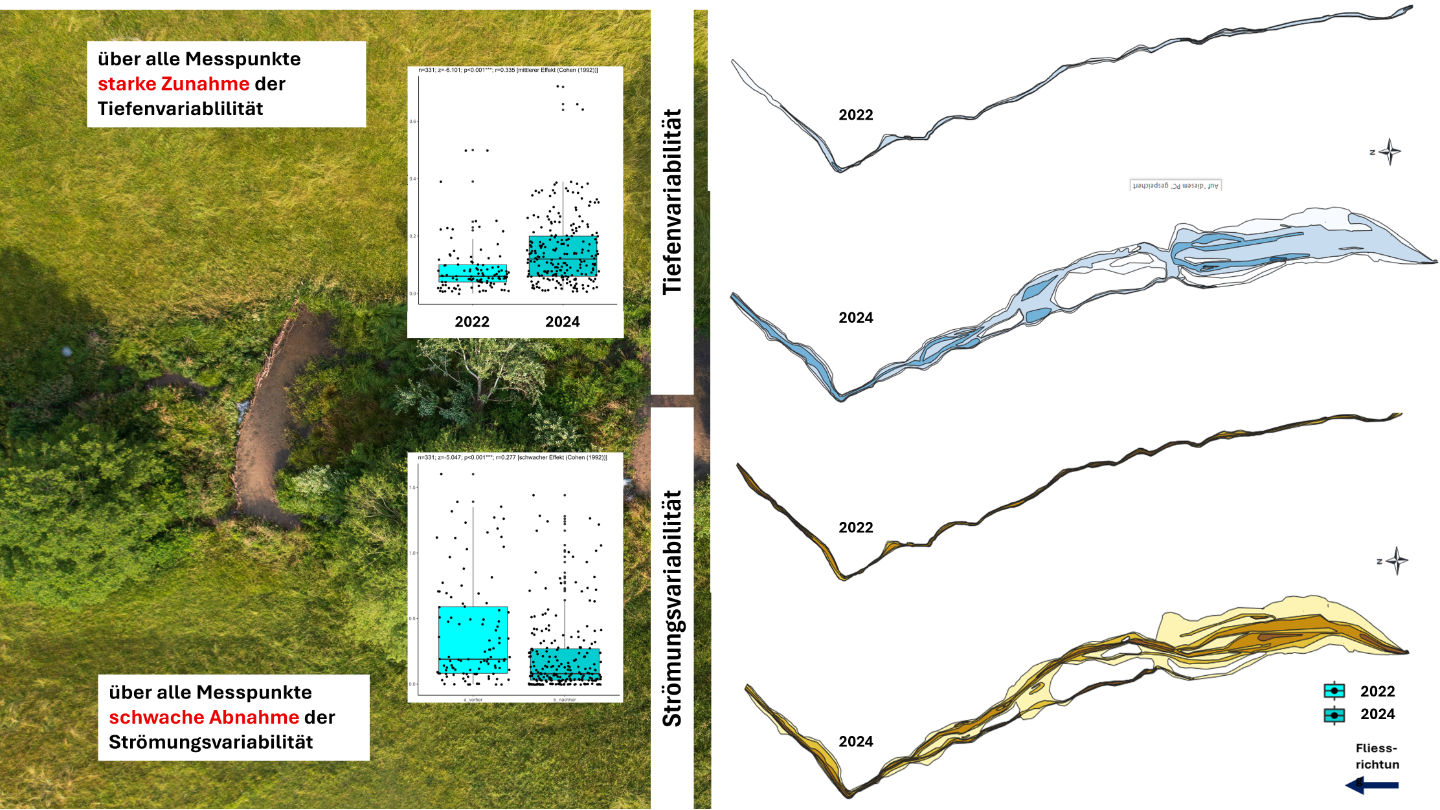Revitalisation method
The Beaver Dam Analog revitalisation method uses simple, nature-inspired techniques to initiate the beneficial long-term effects caused by natural beaver dams in streams. The BDAs are built cost-effectively using simple tools – usually an axe, shovel, chainsaw and pile driver. No heavy construction machinery is needed. The building materials are sourced from the immediate surroundings.
BDAs are among the most sustainable measures in stream revitalisation. Their construction and maintenance initiates ecological restoration processes leading to the recovery of small and medium-sized streams to a near-natural state.
Documents
Context
First introduced in a North American handbook on stream erosion control in 1934 and further developed by researchers at Utah State University under the name Beaver Dam Analogs, this method has recently gained in popularity in Europe. Since 2021, our interdisciplinary group has been working to raise awareness of BDAs and to implement successful projects in Switzerland. France has also been implementing BDA projects since 2023. BDAs are low, natural-looking wooden structures that span streams and redirect water toward the banks, like the dams built by beavers. Over time, the sections of stream influenced by these structures gradually change back into near-natural watercourses. The altered flow dynamics upstream and downstream from the BDAs create more diverse, structurally rich habitats that benefit an array of water-dependent plant and animal species.
BDAs can be planned and implemented quickly. Their use is uncontroversial and doesn't depend on the spread of beavers. They are the key to the extensive restoration of aquatic habitats and the future resilience of our watercourses to climate change.
Documents
Implementation
In Switzerland, the professional implementation of BDAs is a straightforward process:
- Establish one or several clear objectives, such as increasing the sponge effect, climate change resilience or biodiversity.
- Identify a suitable section of the watercourse.
- Obtain detailed information for the planning of the project, including the necessary construction measures and planning permission, which are usually low-threshold.
- Implement the project in several phases over several years
- Give the stream time to develop naturally, monitor its progress, and, if necessary, redirect and adapt its movement through routine watercourse maintenance.
Revitalisation using BDAs sets in motion a wide range of valuable ecological processes that can be actively supported, e.g. through routine watercourse maintenance. Unlike traditional construction measures, which result in a static solution, the BDA method is based on a dynamic process. It encourages natural change in the section of the watercourse being revitalised, allowing nature-like processes to unfold over time and taking the stream through successive stages of ecological development. One aspect of this change is that major flood events may reshape or even destroy individual wooden structures – just as real beaver dams are periodically altered or washed away by natural hydrological movements. In keeping with the idea of replicating beaver activity, these structures may be adjusted, rebuilt or extended when required. In this way, BDAs support the 'natural' revitalisation of the stream in stages.
Documents
Youtube
Project support
Which project design delivers the greatest benefits in terms of water storage, the sponge effect and biodiversity? How can we safeguard existing use of water resources and stream outlets?
Which groups of species could benefit most from minor adjustments?
Who needs to grant permission for what?
Are there any incentives linked to the flood prevention effects of delayed runoff? How can agricultural businesses benefit from such measures?
What financing options are available?
Since every watercourse is unique, questions like these need to be answered on a case-by-case basis. BDA projects demand broad expertise. Our interdisciplinary working group draws on its extensive experience to plan, build and support bespoke BDA projects.
We support initiators, landowners and hydraulic engineering authorities from the initial concept to the implementation and monitoring of BDA sections.
We are pleased to offer expert advice on all technical aspects of your project. Our areas of expertise include civil engineering, ecology, agriculture, agroecology, forestry, water resource management and environmental education.
Documents
Monitoring
The first monitoring of a revitalisation project using BDAs in Switzerland, conducted as part of the Schlossbach project in the canton of Bern, showed positive effects on fish, amphibians and aquatic plants within two years of implementation.
In 2022, six BDAs were installed along the Schlossbach to divert stream water from the incised channel to the bank area, increasing the flooded habitat by 600%.
Even with the reduced flow and widening of the stream, the water temperature remained stable over the course of the day. After two years, continuous sediment accumulation was observed above the BDAs, raising what was formerly an incised stream bed to a shallower, more natural level.
Documents
Youtube
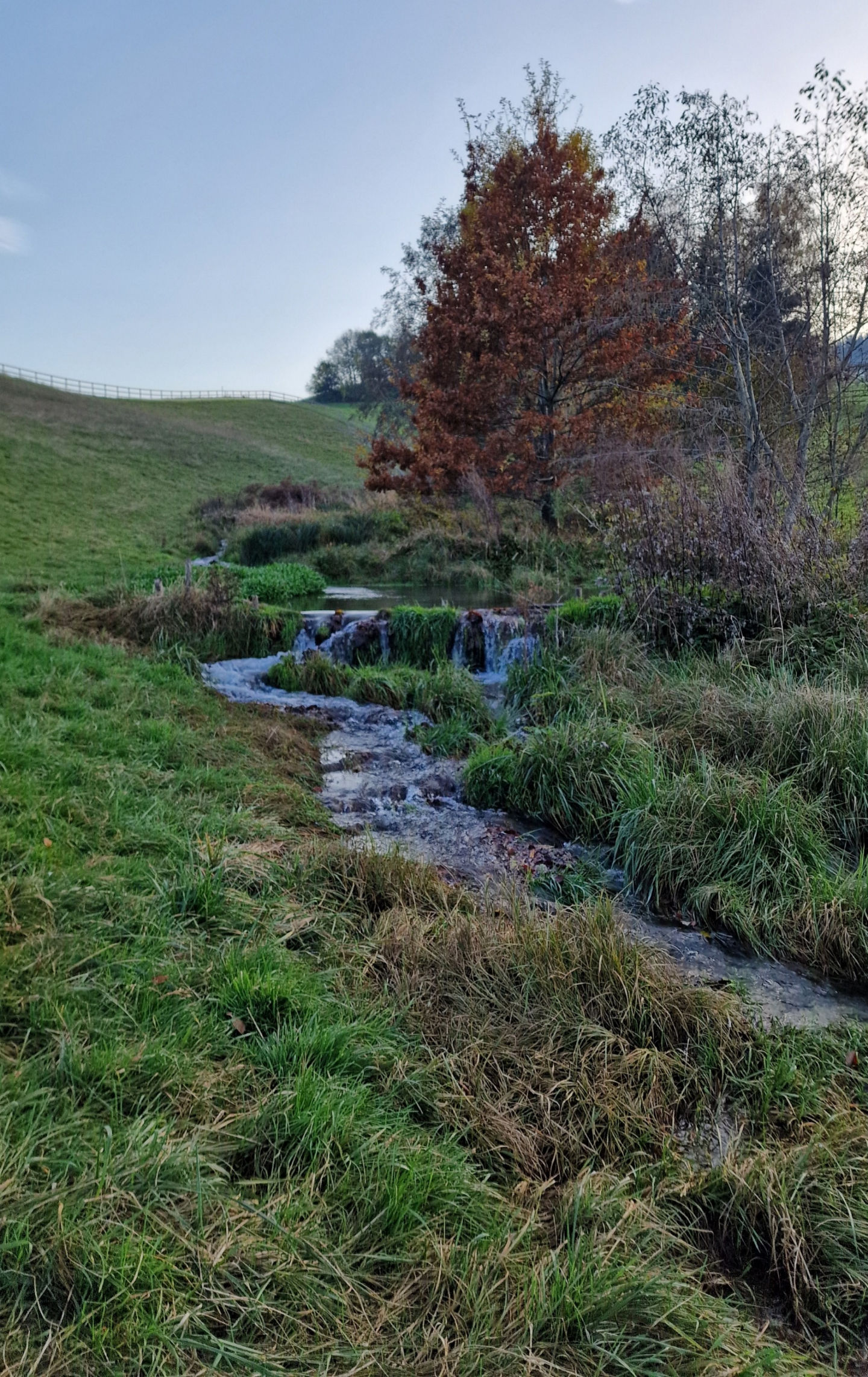
Links
The Swiss context
- Artikel: Der Natur abgeschaut: "Beaver Dam Analogs" - Innovative und kostengünstige Revitalisierungsmethode für natürlichere Fliessgewässer (2022)
- Facts & Figures: Beaver Dam Analogs - Klimaresilienz und Biodiversität für unsere Bäche (2022)
- Vortrag: Der Natur abgeschaut – Beaver Dam Analogs – das grosse Potential von künstlichen Biberdämmen in kleinen Gewässern (2024)
- Fachbericht: BDA-Monitoring Schlossbach (2025)
- Artikel: Beaver Dam Analogs «Der Natur abgeschaut - Das grosse Potenzial von Beaver Dam Analogs in kleinen Gewässern» (2025)
Examples in S witzerland
- SRF_Einstein: Die Schweiz trocknet aus (2023)
- Referenz Schwammland Schlossbach
- Referenz Schwammland Uechtgraben Bauleitung
- Referenz Schwammland Uechtgraben Landwirtschaftsbetrieb
- SRF-Radiobeitrag: Ein künstlicher Damm staut den Bach im Zweiweihertal in Lenzburg (2025)

